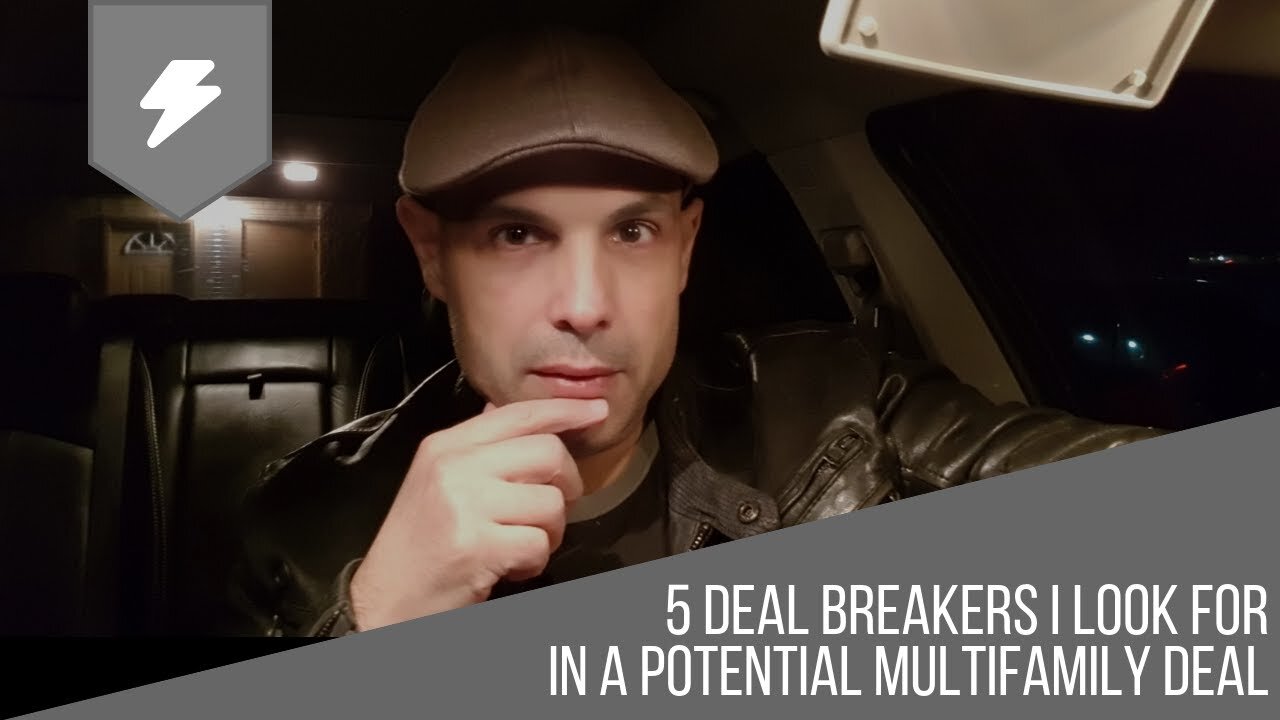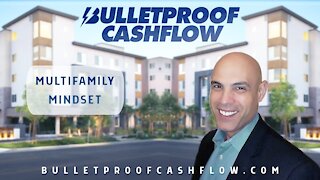Premium Only Content

5 Deal Breakers I Look For In A Multifamily Deal
What are your deal breakers?
Evaluating a deal varies from property to property. My focus these days are Class C and Class B deals, so it really depends on the business plan for the property which drives the underwriting process. This includes gathering the expense and income data, building a financial model, performing rent and sales comps and in-person visits. All this can take anywhere from a few days to a week. Then, once you negotiate the fine points and get it under contract, you will have 30 to 60 days to perform due diligence to confirm your underwriting assumptions and build out your business plan according to what you find. When you consider the costs of both the underwriting and due diligence process, deal evaluation becomes an investment of both your time and money. So, the sooner you can find any deal breakers, the better.
Here are my 5 tips on potential deal breakers to look for when you are checking out a multifamily deal:
1) Mistakes in the Offering Memorandum
The offering memorandum is a marketing document created by the sellers’ broker that summarizes the deal. Note that I just said “marketing.” The purpose of the OM is to support asking price the sellers’ broker. All the photos will look very nice and the typesetting will be impressive. The intent is to sell the deal for the highest price possible – and yielding a beefy commission check for the broker.
Typically, the OM will include a pro forma, a T-12 (trailing 12), and a rent roll. You never use that data when analyzing a deal. At most, you should use it as a guide because most of this data will not be accurate. Sometimes they are even totally fabricated. Remember, this data is to pull in the highest offer.
I have looked at many deals where the rent roll in the OM and the actuals from the property manager were off by over $100 a unit. If you are looking at an 80-unit deal in a 9-cap market, it could mean the value is pumped up by $500k to $1MM. They also had occupancy at 100%. As soon as you see anything ending in a zero, you know it’s bull – especially when you see the rent roll historically showed 87%. I can assure you that they are not chaining tenants to the refrigerators! You must always use actual historical data and a current rent roll when looking at a deal.
Another time, I found they didn’t add the expenses up property and it made the deal appear like it had a higher cap rate. Other times. the internal rate of return was wrong. And other times when someone transcribed the rent roll from an 86-unit deal from paper to Excel and the numbers were all wrong. I know that people may make mistakes, how can you trust the numbers if there are so many errors in the OM? Again, understand that these numbers are all for show. Use them as a guide only when underwriting.
2) Unrealistic Pro Forma
The pro forma contains detailed information on the financial performance of the property. Generally, the T-12 is used to see if income and expenses of the property are stable month over month.
Here is an example that happened to me recently: I was looking at a 150-unit deal. The financials showed gross income for the previous 5 years starting at $780k and increasing by about $12k annually, which seem reasonable. The pro forma showed gross income for the coming year to be over $250k from current and it showed 100% occupancy. Additionally, the expense ratio was at 39%. Even the very best run properties with little to no maintenance run at a 40% expense ratio. While it is possible, the property would be a very well-run machine and those tend to be hard to come by.
On another deal, I found the expenses were super low compared to what they should be in the area. For instance, the annual water and sewage bill for a 30-unit deal was about $5k and the property was sitting on 1.8 acres of land with a lot of grass. Just doesn’t seem right.
The best way to overcome an unrealistic proforma is to base your analysis on how you will run the property. If you are leveraging partners – like a property manager – ask them to prepare a pro forma of their own based on the seller data and knowledge of the area.
-
 3:05
3:05
Malovabay77
4 years ago5 Star Tobacco Online Amazon Deal Breakers
49 -
 7:45
7:45
bulletproofcashflow
4 years agoHow to Prepare an Offer on a Multifamily Deal
23 -
 5:21
5:21
bulletproofcashflow
4 years ago5 Affordable Ways to Force Appreciation in your Multifamily Deal
96 -
 4:48
4:48
bulletproofcashflow
4 years ago3 Things the Bank is Looking For When Considering Your Multifamily Deal
196 -
 0:44
0:44
WMAR
5 years agoRelationship deal breakers
20 -
 0:44
0:44
WMAR
5 years agoRelationship deal breakers
15 -
 3:36
3:36
bulletproofcashflow
4 years ago5 Money-Making Advantages of Multifamily
55 -
 13:02
13:02
bulletproofcashflow
4 years ago $0.01 earnedMultifamily Syndication: Basics Explained
75 -
 4:31
4:31
bulletproofcashflow
4 years agoWhat is Multifamily Syndication?
128 -
 9:55
9:55
bulletproofcashflow
4 years agoWhat Makes Multifamily Recession-Resistant?
1071